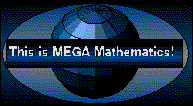

The fundamental questions of Knot Theory involve understanding the similarities and differences between knots. The very youngest students can make observations and draw conclusions about such matters, even though a cohesive, generalized system for doing so for every imaginable knot has not been worked out, even by the most advanced knot theorists. When students think, talk, and write about their ideas for distinguishing between and classifying knots, all four of the Standards at the foundation of doing mathematics are reinforced.
Before students can communicate about knots, they must have the words to describe their experience with them. Finding precise and unambiguous language to talk about something as commonplace as a knot that is "right there in front of you" is challenging, indeed. If students work together to invent and define the words that they need to communicate their observations and discoveries, they are involved with mathematical communication at its most fundamental level. The language (and possibly notation) that they generate to make it possible to share their ideas will become increasingly complex as their ideas and observations become more detailed and subtle. They will experience first-hand the need for precise definitions and unambiguous modes of expression which, when imposed from the outside, can seem like one of the more tyrranical aspects of mathematics.
If you experiment only a short time with knots, you will find yourself involved with a type of spatial reasoning which is not so much geometric as topological. The manipulations that you make as you "mess around" with a knot are clearly spatial, understanding, describing, and predicting the effects of these maniuplations requires a sense of how the knot occupies space, and how the parts of the knot are related to one another in space. This can be extremely complex and difficult to articulate, yet when a student says, "When you do that it doesn't matter, the knot is still the same," she is engaging in that type of reasoning. This is only one kind of non-geometric spatial reasoning which engages mathematicians. Other examples of different types of spatial reasoning are found in the activities with map coloring, graphs, finite state machines and dominating sets.
The information that students collect that describes the characteristics of various knots can become voluminous and overwhelming in no time at all. In order to remember what that information is and to be able to refer to it in a meaningful way, it must be organized somehow. They key to that organization is, of course, the patterns and relationships that the students discover in the information that they have gathered.
Because numbers are so close to us and so much a part of the school mathematics curriculum, the relationship between numbers and mathematics is often difficult to see and remember. Experimenting with mathematical objects other than numbers can help students put numbers in a better perspective. Here are some questions to consider:
Mathematical truth is founded upon the ideas of logic and proof. How does this differ from the knowledge that we obtain from statistics and probability?
When students dip a wire-frame knot into a detergent solution what comes out is a Siefert Surface. Will the second, third, hundredth, and five millionth dipping produce the same Siefert Surface? If, after 50 trials, the knot produces the same Siefert Surface, student can make a good probabilistic argument that the next trial will product the same result. How does a probabalistic argument differ from a logical one? When a probabilistic argument leads you to believe that something is true, how do you go about looking for a logical argument that can prove it, too?

